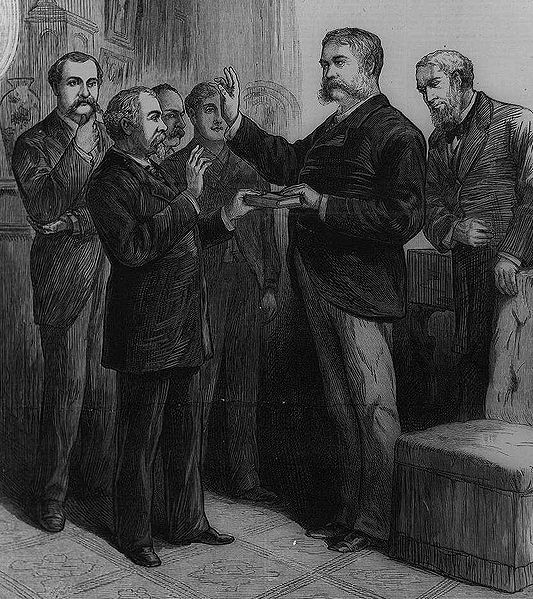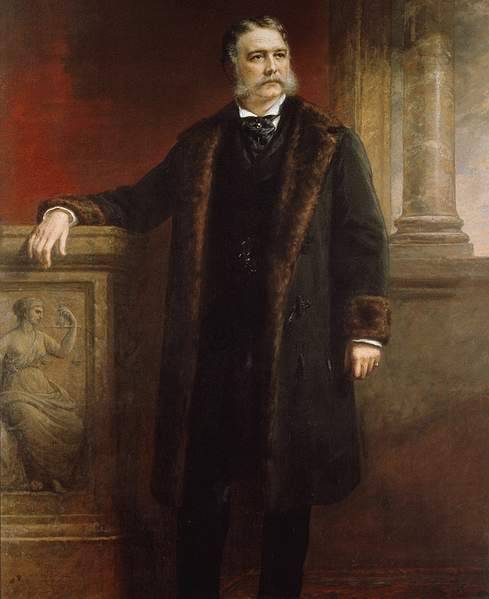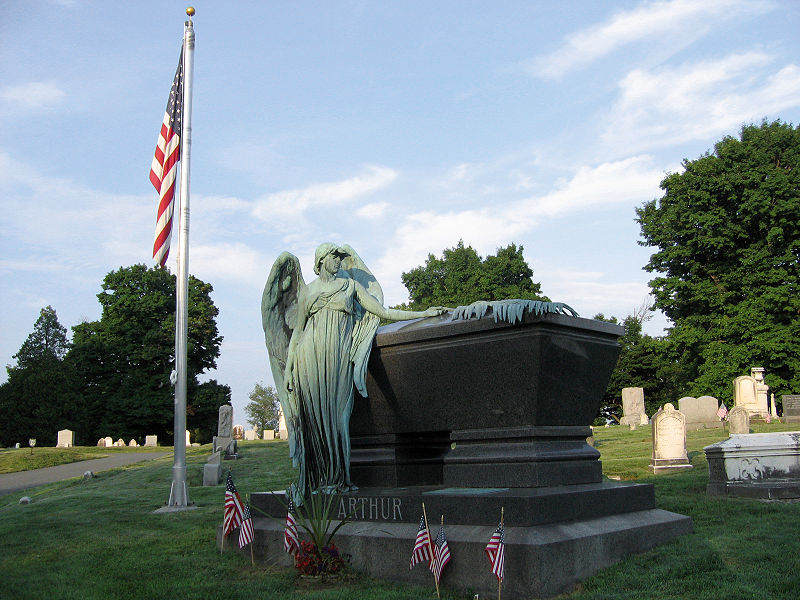<Back to Index>
- Mathematician Bernhard Placidus Johann Nepomuk Bolzano, 1781
- Writer Guido Karl Anton List, 1848
- 21st President of the United States Chester Alan Arthur, 1829
PAGE SPONSOR
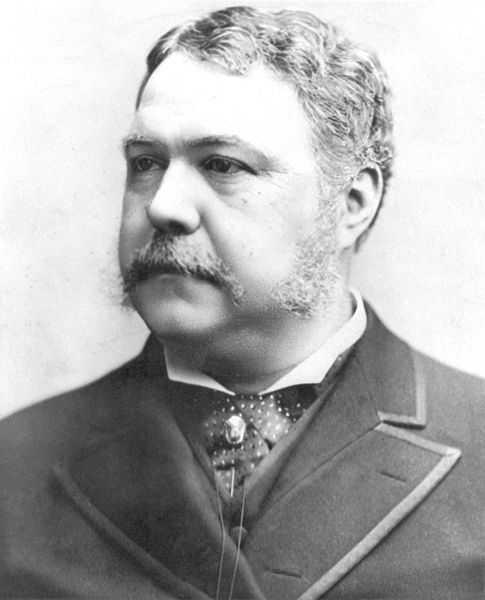
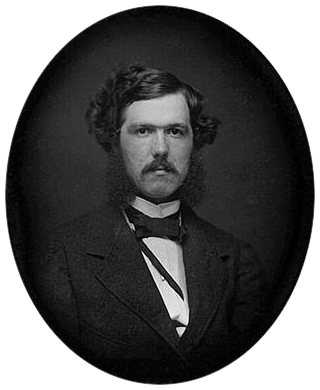
Chester Alan Arthur (October 5, 1829 – November 18, 1886) was an American politician who served as the 21st President of the United States. Arthur was a member of the Republican Party and worked as a lawyer before becoming the 20th Vice President under James Garfield. While Garfield was mortally wounded by Charles J. Guiteau on July 2, 1881, he did not die until September 19 of that year, at which time Arthur was sworn in as president, serving until March 4, 1885.
Before
entering elected politics, Arthur was a member of the Stalwart faction of the Republican
Party and a political protégé of Roscoe Conkling,
rising to Collector of
the Port of New York, a position to which he was appointed by
President Ulysses S. Grant.
He was then removed by the succeeding president, Rutherford B.
Hayes, in an effort to reform the patronage system in New York. To the
chagrin of the Stalwarts, the onetime Collector of the Port of New York
became, as President, a champion of
civil service reform.
He avoided old political cronies and eventually alienated his old
mentor Conkling. Public pressure, heightened by the assassination of
Garfield, forced an unwieldy Congress to heed the President. Arthur's
primary achievement was the passage of the Pendleton Civil
Service Reform Act.
The passage of this legislation earned Arthur the moniker "The Father
of Civil Service" and a favorable reputation among historians. Publisher
Alexander K. McClure wrote, "No man ever entered the Presidency so
profoundly and widely distrusted, and no one ever retired ... more
generally respected." Author Mark
Twain, deeply cynical about
politicians, conceded, "It would be hard indeed to better President
Arthur's administration." Chester
Alan Arthur was the son of Irish-born preacher William Arthur (born in
Cullybackey, Ballymena, County Antrim)
and Vermont born Malvina Stone Arthur. Malvina's grandfather, Uriah
Stone, fought for the Continental Army during the American
Revolution and named
his son, Malvina's father, George Washington Stone. Malvina's mother
was part Native American.
At the time of the
birth of the future president, Arthur's father was an Irish subject of
the United Kingdom of Scottish
descent, who naturalized as a U.S. citizen in 1843.
Arthur's restored ancestral home from the late 18th Century is in County Antrim in
Northern Ireland. An interpretive center at the cottage tells the story
of the Arthur family, and provides visitors with demonstrations of life
in Ireland over the last 200 years. Most
official references list Arthur as having been born in Fairfield in Franklin
County, Vermont, on
October 5, 1829. However, some time in the 1870s Arthur changed it to
1830 to make himself seem a year younger. His father had initially
migrated to Dunham, Lower Canada,
where he and his wife at one point owned a farm about 15 miles (24
km) north of the U.S. border. There
has long been speculation that the future president was actually born in Canada and that the family moved
to Fairfield later. If Arthur had been born in Canada, some believe
that he would not have been a natural-born
citizen (interpreting
the law to mean that to be a natural-born citizen one must be born on
U.S. territory) and would thus have been constitutionally ineligible to
serve as vice president or president. During the 1880 U.S.
presidential election a
New York attorney, Arthur P. Hinman, was hired to explore rumors of
Arthur's foreign birth. Hinman alleged that Arthur was born in Ireland and
did not come to the United States until he was fourteen years old. When
that story failed to take root Hinman came forth with a new story that
Arthur was born in Canada.
This claim also fell on deaf ears. In any case, Arthur's father
was not naturalized until some years after his birth, resulting in
Arthur having dual citizenship. Arthur spent some of his childhood
years living in Perry, New York.
One of Arthur's boyhood friends remembers Arthur's political abilities
emerging at an early age: When
Chester was a boy, you might see him in the village street after a
shower, watching the boys building a mud dam across the rivulet in the
roadway. Pretty soon, he would be ordering this one to bring stones,
another sticks, and others sod and mud to finish the dam; and they
would all do his bidding without question. But he took good care not to
get any of the dirt on his hands. (New York Evening Post, April 2, 1900) Chester
Arthur's Presidency was predicted by James Russel Webster, a Perry
resident. A detailed account of this prediction is found in a
self-written memorial for Webster. An excerpt from Webster's memorial: He
first attended the Baptist church in Perry, the pastor there being
"Elder Arthur", father of Chester A. Arthur. The latter was then a
little boy, and Mr. Webster, once calling at his house, put upon his
head of the lad, remarked, "this little boy may yet be President of the
United States." Years after, calling at the White House, he related the
circumstances to President Arthur, who replied that he well remembered
the incident although the name of the man who thus predicted his future
had long since passed from his memory; then standing up he added. "You
may place your hand upon my head again." He
went to prep school at
the academy in Union Village (now the village of Greenwich in southern
Washington County NY), and then to the Lyceum, where he was known as
Chet. During his time at Lyceum Arthur joined other young Whigs in support of Henry Clay and even participated in a
melee against those opposed to Clay. Arthur
attended Union College in 1845 where he studied
the traditional classics. As a senior there in 1848, at age 18, he was
elected to Phi Beta Kappa and president of the debate
society. He often donned a green coat to show his support for the Fenian
Brotherhood. While living outside of Hoosick
Falls, New York, he went back
to Union College and received his Master's degree in 1851. Arthur
became principal of North Pownal Academy in North Pownal,
Vermont, in 1849. He
studied law and was admitted to the
bar in
1854 after attending State and
National Law School in Ballston Spa,
New York. Arthur commenced practice in New York City.
A champion of civil rights,
Arthur was one of the attorneys who successfully represented Elizabeth
Jennings Graham;
her lawsuit, after being denied seating on a streetcar due to her race,
contributed to the desegregation of New York City public
transportation. In Lemmon v. New
York,
the "Lemmon Slave Case", Arthur helped secure the 1860 decision that
slaves being transferred to a slave state through New York would be
emancipated. Arthur also took an active part
in the reorganization of the New York Militia. During the American Civil
War, on April 4, 1862, Arthur was appointed by Gov. Edwin D. Morgan Inspector - General
of the State Militia, and on July 22 transferred to the office of
Quartermaster - General of the State Militia, remaining in this office
until the end of the year. Both offices, although
political appointments, carried the rank of brigadier
general. After the war, he resumed the practice of law in New
York City. With the help of Arthur's patron and political boss Roscoe Conkling,
Arthur was appointed by President Ulysses S. Grant Collector of
the Port of New York in
1871, and remained in office until his removal by President Rutherford B.
Hayes in 1878. This
was an extremely lucrative and powerful position at the time, and
several of Arthur's predecessors had run afoul of the law while serving
as collector. Honorable in his personal life and his public career,
Arthur sided with the Stalwarts in the Republican Party, which firmly
believed in the spoils
system even
as it was coming under vehement attack from reformers. He insisted upon
honest administration of the Customs House but nevertheless staffed it
with more employees than it really needed, retaining some for their
loyalty as party workers rather than for their skill as public servants. In
1878, Grant's successor, Rutherford B.
Hayes,
attempted to reform the Customs House. He ousted Arthur, who resumed
the practice of law in New York City. Conkling and his followers tried
to win back power by the nomination of Grant for a third term at the 1880 Republican
National Convention, but without success. Grant and James G. Blaine deadlocked, and after 36
ballots, the convention turned to a dark horse James A.
Garfield, a long time and General in the Civil War. Knowing the
election would be close, Garfield's people began asking a number of
Stalwarts if they would accept the second spot. Levi P. Morton,
on Conkling's advice, refused, but Arthur accepted, telling his furious
leader, "This is a higher honor than I have ever dreamt of attaining. I
shall accept!" Conkling
and his Stalwart supporters reluctantly accepted the nomination of
Arthur for Vice President. Arthur campaigned hard for his and
Garfield's election, but it was a close contest, with the
Garfield - Arthur ticket receiving a nationwide plurality of fewer than
ten thousand votes. After
the election, Conkling began making demands of Garfield as to
appointments, and the Vice President – elect supported his longtime
patron against his new boss. According to Ira Rutkow's recent biography
of Garfield, the new President disliked the Vice President, and he
would not let him into his house. Then, on July 2, 1881, President Garfield
was shot by Charles
J. Guiteau, who shouted: "I
am a Stalwart of the Stalwarts... Arthur is president now!" Arthur's shock at the assassination was
augmented by his mortification at Guiteau's claim of political kinship.
Garfield initially
survived the shooting, but due to a
combination of infections and the poor medical care of the time, he
gradually deteriorated and died on September 12.
Arthur was aware of the factions and rivalries of the Republican Party,
as well as the controversies of cronyism versus civil service reform.
Entering the presidency, Arthur believed that the only way to garner
the nation's approval was to be independent from both factions. Arthur
was determined to go his own way once in the White House.
He became a man of fashion in his manner of dress and in his
associates; he was often seen with the elite of Washington, D.C.,
New York City, and Newport. To the indignation of the Stalwarts, the
onetime Collector of the Port of New York became, as President, a
champion of civil service reform. President
Arthur took the oath of office twice. The first time was at his
Lexington Avenue residence, when it was given just past midnight on
September 20. The oath was given by New York
Supreme Court justice John R. Brady.
The second time was two days later after he returned to Washington.
This time it was given in the Capitol by Chief Justice
of the United States Morrison Waite.
This was to avoid any dispute over whether the oath was valid if given
by a state official. (A similar situation later occurred with Calvin Coolidge.)
Arthur
requested that Garfield's cabinet and appointees delay their
resignations until Congress convened in December. However, shortly
after this request Treasury
Secretary William Windom and Attorney General Wayne MacVeagh submitted their resignations. Ulysses S. Grant recommended John Jacob
Astor III to be
the new Treasury Secretary, but Arthur preferred Edwin D. Morgan.
Morgan declined the offer twice, but Arthur submitted it to the Senate
anyway, and Morgan was confirmed. Morgan, age 72, still refused. The
cabinet position was then awarded to Stalwart Charles J.
Folger (October
27). MacVeagh's replacement, Benjamin
Harris Brewster, another stalwart, was confirmed two months
later.
Although Secretary of
State Blaine agreed
to delay his resignation, he changed his mind in mid-October. Conkling
felt he himself was the obvious choice to replace Blaine, but Arthur
felt such nepotism would disgrace the
presidency and selected Frederick
Theodore Frelinghuysen, another stalwart, recommended by Grant.
The next to resign was Postmaster
General Thomas Lemuel
James, whom Arthur had tried to renominate. Arthur nominated Timothy O. Howe,
another stalwart and a long-time friend. For Secretary of
the Navy, Arthur nominated William E.
Chandler, a recommendation from Blaine which gave some factional
balance to the administration. Grant, who had recommended Edward
Fitzgerald Beale, was upset by the Chandler pick and never fully
forgave Arthur for the offense.
Robert Todd Lincoln as Secretary
of War was the only member of the Garfield
cabinet to continue under Arthur. He was the only member of Arthur's
cabinet who was never replaced and served until the end of Arthur's
term in 1885. Acting
independently of party dogma, Arthur also tried to lower tariff rates
so the government would not be embarrassed by annual surpluses of
revenue. Congress raised about as many rates as it trimmed, but Arthur
signed the Tariff Act of 1883 anyway. Aggrieved Westerners and
Southerners looked to the Democratic Party for redress, and the tariff
began to emerge as a major political issue between the two parties. Civil
Service Reform had been a burning issue since the Grant administration
and both Hayes and Garfield took smaller steps to wrangle in the
corrupt and inefficient Patronage system in Washington. Arthur at first
was skeptical of Civil Service reform, having been a member of the Stalwarts wing of the Republican
party. Arthur, however, realized that
reform was vital after the Republicans lost seats in the mid-term
election of 1882. The Pendleton Act of
1883 was written by a Democrat, Senator George Pendleton, and "banned
salary kickbacks, apportioned federal appointments among the states,
and ruled that new employees must begin their service at the bottom of
the career ladder, advancing only by merit exams." The
passage of this reform became the single most important act in Arthur's
presidency. The great irony is that Arthur, a product of the Spoils
System, was just the man to end patronage. By standing up to his own
friend Roscoe Conkling and wing of the Republican Party, Arthur showed
remarkable independence from political forces. Though it established a bipartisan Civil
Service Commission which
forbade levying political assessments against officeholders and created
a written examination system, the initial effects were less outstanding
than many believe. Gerald Bahles of the Miller Center of Public Affairs
writes that because the legislation was "not retroactive, present
(primarily Republican) incumbents could remain in office even if the
Democrats won the forthcoming presidential election." In
addition, the Pendleton Act did not cover state or municipal workers
and even exempted many federal officials. Despite these imperfections
the Pendleton Act was a huge leap forward, spelling the end of the
Spoils System. Chester
Arthur signed the Edmunds Act that banned bigamists and polygamists from voting and holding
office. The act was specifically enforced in Utah, a highly populated Mormon territory and established a
five-man "Utah commission" to prevent bigamists and polygamists from
voting. The
Arthur Administration enacted the first general Federal immigration law.
Arthur approved a measure in 1882 excluding paupers,
criminals, and the mentally ill. In
response to anti-Chinese sentiment in the West, Congress passed a Chinese
Exclusion Act. The act would have made illegal the immigration
of Chinese laborers for twenty years and denied American citizenship to Chinese
Americans currently
residing in the United States who were not already
citizens and who were not born in the United States. Arthur
vetoed this steep restriction on the grounds that it violated the
Burlingame Treaty. He was immediately denounced by newspapers in
California. When a compromise restriction of ten years was proposed,
Arthur agreed and signed the revised bill, however the Chinese
Americans residing in the United States were denied citizenship. The
Act was renewed every ten years until the National Origins Act of 1924
essentially eliminated Chinese immigration because the quotas were
based on the 1890 numbers. The Act had remarkable staying power and was
not fully repealed until sixty-one years later in 1943, by which time
the US was an ally of Nationalist
China in the fight
against Japan during World War II.
Under such circumstances, the Act had become an embarrassment to the
US, necessitating its repeal. Arthur was reluctant to enforce the 15th
Amendment in the United
States Constitution and never
attempted while President to overturn "Jim
Crow" laws throughout the
nation that prevented African-Americans from voting. This may have been caused by
a Supreme Court decision to overturn civil right cases and the Civil
Rights Act of 1875. In
relation to Asia and Asians, President Arthur was also in office when
the United States became the first Western country to establish
diplomatic relations in modern times with Korea,
which was then a unified, independent kingdom under the rule of the Joseon Dynasty.
This was achieved in 1882 with the signing of the Shufeldt Treaty, named after Commodore Robert W.
Shufeldt (1822 – 95),
the principal U.S. negotiator. Korea had existed in a state of virtual
hermetic isolation for centuries until 1876, when it was forced to
establish diplomatic relations with Japan on an unequal basis. The US
maintained full diplomatic relations with Korea until 1905, when the
latter became an unwilling protectorate of Japan following the end of
the Russo-Japanese
War. In
1884, the International
Meridian Conference was
held in Washington, D.C. at President Arthur's
behest. This established the Greenwich
Meridian and
international standardized time, both in use today. Perhaps
Arthur's biggest success in foreign policy was the construction of a
new, steel navy. After the Civil War the US navy had not been upgraded
and so twenty years later the American navy was considered a joke when
compared to the mighty armadas of the European powers. Arthur "sought
the construction of steam-powered steel cruisers, steel rams, and
steel-clad gunboats" and
"moved decisively to curb corruption and incompetency within the Navy." In
addition, both the Naval War College and the Office of Naval
Intelligence was created. For these achievements Arthur was called the
"Father of the Steel Navy." President
Arthur demonstrated that he was above not only factions within the Republican Party,
but possibly the party itself. Perhaps, in part, he felt able to do
this because of the well-kept secret he had known since a year after he
succeeded to the Presidency, that he was suffering from Bright's disease,
a fatal kidney disease. Arthur probably first
contracted the disease in 1882. While
it is impossible to know just when Arthur began to be affected by the
disease, Arthur's conduct during the elections of 1879 and 1880 was
described as vigorous. Yet during the congressional elections of 1882,
from mid-1882 onward, he was clearly not well. The disease accounted for his
failure to seek the Republican nomination for president aggressively in
1884.
Nevertheless, Arthur was the
last incumbent President to submit his name for renomination and fail
to obtain it. Arthur sought a full term
as President in 1884,
but lost the Republican party's presidential nomination to former Speaker of the
House and Secretary of
State James G. Blaine of Maine.
Blaine, however, lost the general election to Democrat Grover Cleveland of New York. Arthur
married Ellen "Nell"
Lewis Herndon on
October 25, 1859. She was the only child of Elizabeth Hansbrough and
Captain William Lewis
Herndon USN. She
was a favorite niece of Commander Matthew
Fontaine Maury, USN of the United States
Naval Observatory where
her father had worked. In
1860, Chester Arthur and "Nell" had a son, William Lewis Herndon
Arthur, who was named after Ellen's father. This son died at age two of
a brain disease. Another son, Chester Alan Arthur II, was born in 1864,
and a girl, named Ellen Hansbrough Herndon after her mother, in 1871.
Ellen Arthur died of pneumonia on
January 12, 1880, at the age of 42, twenty months before Arthur became
President. Arthur stated that he would never remarry and, while in the
White House, asked his sister Mary Arthur
McElroy,
the wife of writer John E. McElroy, to assume certain social duties and
help care for his daughter. President Arthur had a memorial to his
beloved "Nell" – a stained glass window installed in St. John's
Episcopal Church within
view of his office and had the church light it at night so he could
look at it. The memorial remains to this day. Arthur
is remembered as one of the most society-conscious presidents, earning
the nickname "the Gentleman Boss" for his style of dress and courtly
manner. Professor Marina Margaret Heiss at the University of Virginia
lists Arthur as an example of an INTJ
personality. Upon
taking office, Arthur did not move into the White House immediately. He insisted
upon its redecoration and had 24 wagonloads of furniture, some
including pieces dating back to John Adams'
term, carted away and sold at public auction.
Former president Rutherford B.
Hayes bought two
wagonloads of furniture which today are at his home Spiegel Grove.
Arthur then commissioned Louis Comfort
Tiffany to
replace them with new pieces. A famous designer now best-known for his stained glass,
Tiffany was among the foremost designers of the day. Arthur
was a fisherman who belonged to the
Restigouche Salmon Club and once reportedly caught an 80-pound bass off the coast of Rhode Island. By
the end of his presidency, Arthur had acquired wide personal
popularity. On the day he left office, four young women (ignorant of
Arthur's pledge not to marry again) offered to marry him. He was
sometimes called "Elegant Arthur" for his commitment to fashionable
attire and was said to have "looked like a president." He reportedly
kept 80 pairs of pants in his wardrobe and changed pants several times
a day. He was called "Chet" by family and friends, and by his middle
name, with the stress on the second syllable ("Al-AN"). As
president, Arthur alleviated his stress by taking late evening walks
that usually began after 1 AM. He rarely went to bed before 2 AM. However, by the summer of 1882
Arthur was often ill and exhausted, and by the beginning of 1883 he
looked emaciated and aged. That March he had attacks from hypertensive
heart disease and glomerulonephritis.
Officially, Arthur was said to have a cold. In April he took a vacation to Florida for
some rest. The trip was cut short when he was hit with severe pain. The
White House criticized the media's sensationalism on the matter and
blamed the illness on over exposure and seasickness.
In
October it was revealed to the press that Arthur had been diagnosed
that summer with Bright's disease. In a private conversation
shortly after James G. Blaine's
nomination for the 1884
presidential election Arthur
confided in Frank B. Conger that his disease was in an advanced stage
and he only had a few months to live, and by the end of his presidency
Arthur's health had deteriorated significantly. Arthur
served as President through March 4, 1885. Upon leaving office, he
returned to
New York City to
serve as counsel to his old law firm. However, he was often indisposed
because of his Bright's disease. He managed a few public appearances
but none after the end of 1885. After
summering in New London,
Connecticut, he
returned (October 1, 1886) quite ill. On November 16, by his order,
nearly all of his papers, personal and official, were burned. The next
morning he suffered a massive cerebral
hemorrhage and never
regained consciousness. He died the next day. His post presidency was the second shortest,
longer only than that of James Polk who died 103 days after
leaving office. On
November 22, a private funeral was held at the Church of the
Heavenly Rest. His pallbearers were Walter Q.
Gresham, Robert Todd
Lincoln, William E.
Chandler, Frank Hatton, Benjamin H.
Brewster, Philip Sheridan, Cornelius Rea
Agnew, Cornelius
Newton Bliss, Robert
G. Dun, George H. Sharpe, Charles Lewis
Tiffany and Cornelius
Vanderbilt. Also in attendance were President Grover Cleveland,
former President Rutherford B.
Hayes, Benjamin
Franklin Butler, Chief Justice Morrison Waite,
Justices
Samuel Blatchford and John Marshall
Harlan, Roscoe Conkling and James G. Blaine. Chester was buried next to Ellen in the
Arthur family plot in the Albany
Rural Cemetery in Menands,
New York, in a large sarcophagus on a large corner plot that contains the
graves of many of his family members and ancestors. Sculptor Ephraim
Keyser designed the
sarcophagus.
